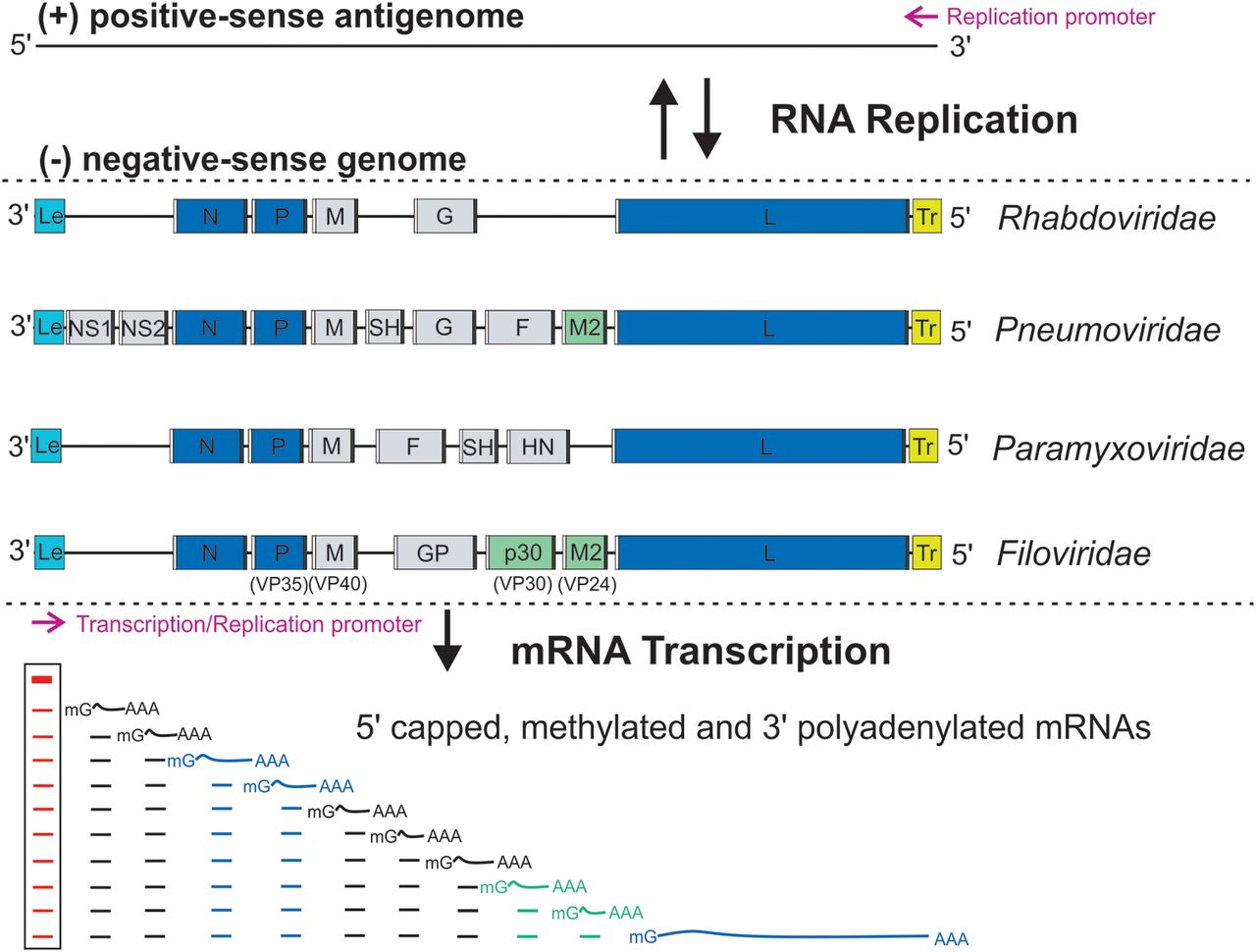|
Bornavirus
''Bornaviridae'' is a family of negative-strand RNA viruses in the order ''Mononegavirales''. Horses, sheep, cattle, rodents, birds, reptiles, and humans serve as natural hosts. Diseases associated with bornaviruses include Borna disease, a fatal neurologic disease of mammals restricted to central Europe; and Proventricular dilatation disease, proventricular dilatation disease (PDD) in birds. Bornaviruses may cause encephalitis in mammals like horses or sheep. The family contains four genera. History Borna disease was first identified in 1926 and its genome was isolated in 1990. The ICTV proposed the creation in 1996 of the family ''Bornaviridae'' along with the genus ''Bornaviru''s (today ''Orthobornavirus''). The viral family is named after the city of Borna, Leipzig, Borna in Saxony, Saxony, Germany, which is where many animals were lost to the sporadic encephalopathy caused by the viral disease. Structure Orthobornavirions are enveloped, with spherical geometries and he ... [...More Info...] [...Related Items...] OR: [Wikipedia] [Google] [Baidu] |
Variegated Squirrel
The variegated squirrel (''Sciurus variegatoides'') is a tree squirrel in the genus ''Sciurus'' found in Costa Rica, El Salvador, Guatemala, Honduras, southern Mexico, Nicaragua, and Panama. Fifteen subspecies are recognised. It is a common squirrel and the International Union for Conservation of Nature has rated it a "least-concern species". Variegated squirrels kept as pets in Germany have been implicated in the transmission of a bornavirus to humans from which three people have died. Description The variegated squirrel is a medium-sized squirrel; the head-and-body length is about with a tail of much the same length. It weighs about . The several subspecies differ in appearance and there is often a considerable variation between the appearances of individuals in the same population. The dorsal colouration varies between dark brown to yellowish grey. The neck tends to be darker than other parts and there is often a paler patch behind the ears. The underparts are usually some sha ... [...More Info...] [...Related Items...] OR: [Wikipedia] [Google] [Baidu] |
Borna Disease
Borna disease, also known as sad horse disease, is an infectious neurological syndrome of warm-blooded animals, caused by Borna disease viruses 1 and 2 (BoDV-1/2). BoDV-1/2 are neurotropic viruses of the species ''Orthobornavirus bornaense'', and members of the ''Bornaviridae'' family within the ''Mononegavirales'' order. Borna disease is a severe neurological illness that predominantly affects horses and sheep, but it has been observed in a wide range of mammals. The disease is characterised by ataxia and abnormal depressive behaviour, frequently culminating in death. There have been rare cases of human fatalities associated with encephalitis caused by Borna disease virus infection. Additionally, correlative evidence exists linking BoDV-1/2 infection with neuropsychiatric disorders such as bipolar disorder in humans. History Borna disease was first described in 1885, when all horses belonging to a cavalry regiment stationed near the city of Borna in Saxony, Germany, died f ... [...More Info...] [...Related Items...] OR: [Wikipedia] [Google] [Baidu] |
Mononegavirales
''Mononegavirales'' is an order of negative-strand RNA viruses which have nonsegmented genomes. Some members that cause human disease in this order include Ebola virus, human respiratory syncytial virus, measles virus, mumps virus, Nipah virus, and rabies virus. Important pathogens of nonhuman animals and plants are also in the group. The order includes eleven virus families: '' Artoviridae'', '' Bornaviridae'', ''Filoviridae'', '' Lispiviridae'', '' Mymonaviridae'', '' Nyamiviridae'', ''Paramyxoviridae'', '' Pneumoviridae'', ''Rhabdoviridae'', '' Sunviridae'', and '' Xinmoviridae''. Use of term The order ''Mononegavirales'' (pronounced: ) According to the rules for taxon naming established by the International Committee on Taxonomy of Viruses (ICTV), the name ''Mononegavirales'' is always to be capitalized, italicized, and never abbreviated. The names of the order's physical members ("mononegaviruses" or "mononegavirads") are to be written in lower case, are not italicized, ... [...More Info...] [...Related Items...] OR: [Wikipedia] [Google] [Baidu] |
Proventricular Dilatation Disease
Proventricular dilatation disease (PDD) is an incurable probably viral disease of psittacine birds. It was first recognized and described in 1978 by Dr. Hannis L. Stoddard. Since the first reported cases were involving species of macaw, the condition was termed macaw wasting syndrome. Clinical signs The clinical presentation of this disease varies with the individual as well as in severity of those symptoms. Often the symptoms include a gastrointestinal component, but many times birds with this disease will present with neurologic signs as well, or in lieu of digestive anomalies. Gastrointestinal signs may include: Regurgitation, crop impaction, poor appetite, weight loss, or passage of undigested food in the feces.Harrison, and Lightfoot. 2006 ''Clinical Avian Medicine''. Spix Publishing, Palm Beach, Florida. Neurologic symptoms may include: Weakness, ataxia, paresis, proprioceptive deficits, head tremors, and rarely seizures. Muscle wasting and a generalized poor body condition i ... [...More Info...] [...Related Items...] OR: [Wikipedia] [Google] [Baidu] |
Rhesus Macaque
The rhesus macaque (''Macaca mulatta''), colloquially rhesus monkey, is a species of Old World monkey. There are between six and nine recognised subspecies split between two groups, the Chinese-derived and the Indian-derived. Generally brown or grey in colour, it is in length with a tail and weighs . It is native to South Asia, South, Central Asia, Central, and Southeast Asia and has the widest geographic range of all non-human primates, occupying a great diversity of altitudes and habitats. The rhesus macaque is diurnality, diurnal, arboreal, and terrestrial. It is mostly herbivorous, feeding mainly on fruit, but also eating seeds, roots, buds, Bark (botany), bark, and cereals. Rhesus macaques living in cities also eat human food and trash. They are gregarious, with troops comprising 20–200 individuals. The social groups are matrilineal. Individuals communicate with a variety of facial expressions, vocalisations, body postures, and gestures. As a result of the rhesus macaq ... [...More Info...] [...Related Items...] OR: [Wikipedia] [Google] [Baidu] |
Seroprevalence
Seroprevalence is the number of persons in a population who test positive for a specific disease based on serology (blood serum) specimens, often presented as a percent of the total specimens tested or as a proportion per 100,000 persons tested. As positively identifying the occurrence of disease is usually based upon the presence of Antibody, antibodies for that disease (especially with viral infections such as herpes simplex, HIV, and SARS-CoV-2), this number is not significant if the Sensitivity and specificity, specificity of the antibody is low. References External links HIV Portland Glossary definition of seroprevalence Epidemiology Serology {{med-diagnostic-stub ... [...More Info...] [...Related Items...] OR: [Wikipedia] [Google] [Baidu] |
Treeshrew
The treeshrews (also called tree shrews or banxrings) are small mammals native to the tropical forests of South and Southeast Asia. They make up the entire order Scandentia (from Latin ''scandere'', "to climb"), which split into two families: the Tupaiidae (19 species, "ordinary" treeshrews), and the Ptilocercidae (one species, the pen-tailed treeshrew). Though called 'treeshrews', and despite having previously been classified in Insectivora, they are not true shrews, and not all species live in trees. They are omnivores; among other things, treeshrews eat fruit. As fellow members of Euarchonta, treeshrews are closely related to primates, and have been used as an alternative to primates in experimental studies of myopia, psychosocial stress, and hepatitis. Description Treeshrews are slender animals with long tails and soft, greyish to reddish-brown fur. The terrestrial species tend to be larger than the arboreal forms, and to have larger claws, which they use for digging up ... [...More Info...] [...Related Items...] OR: [Wikipedia] [Google] [Baidu] |


